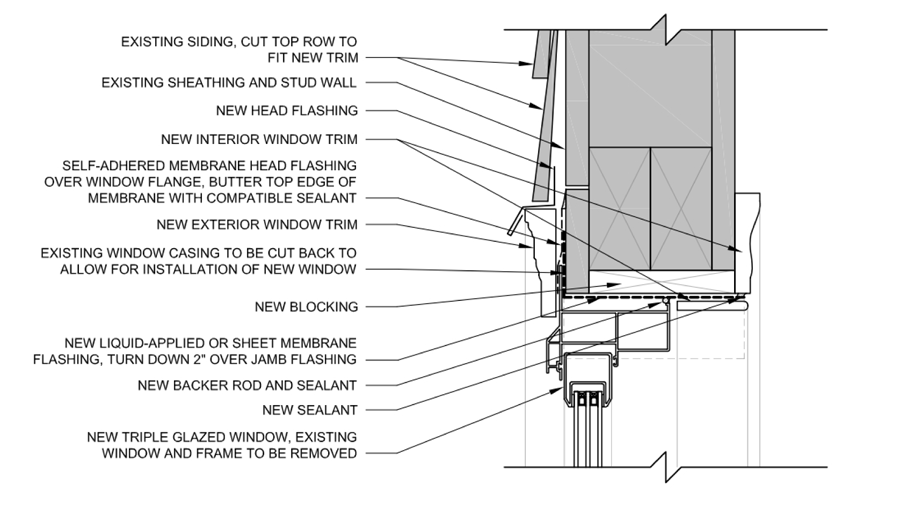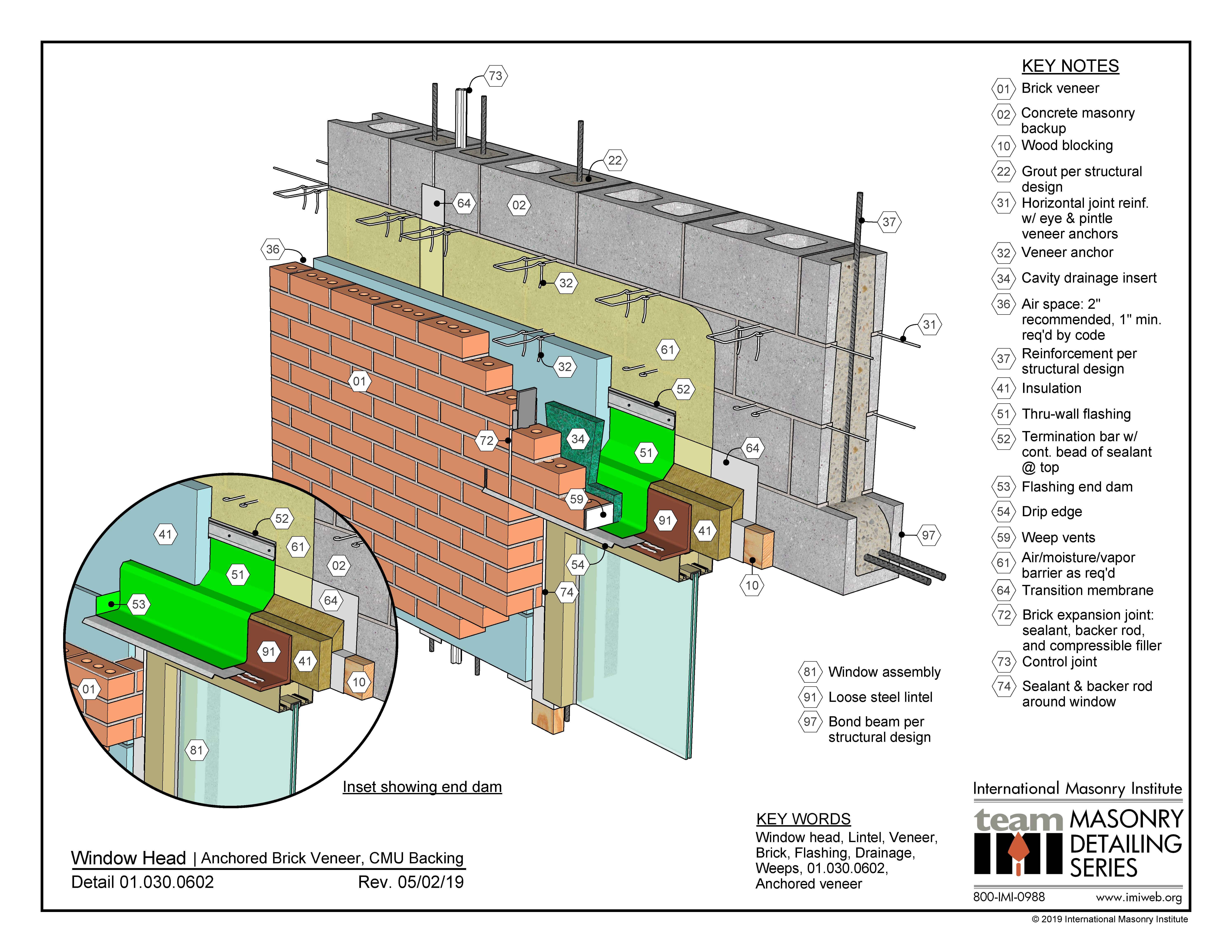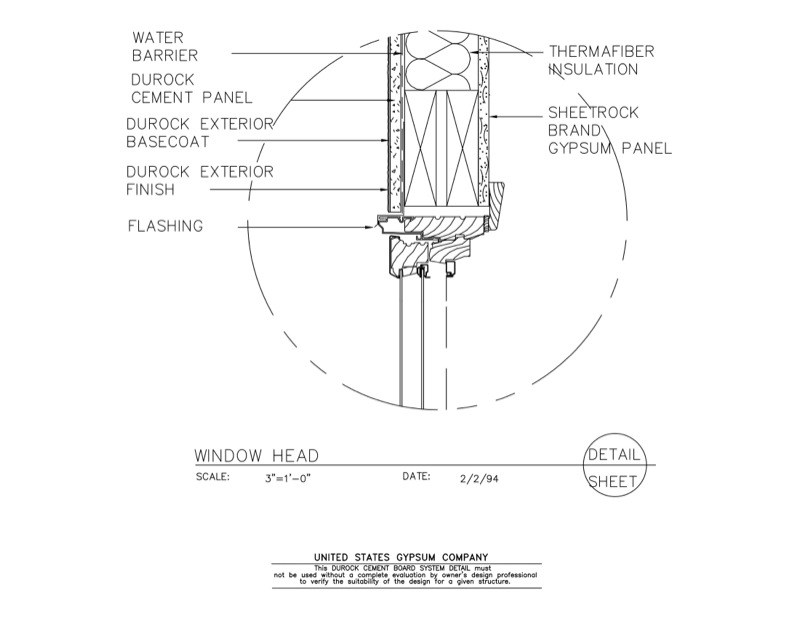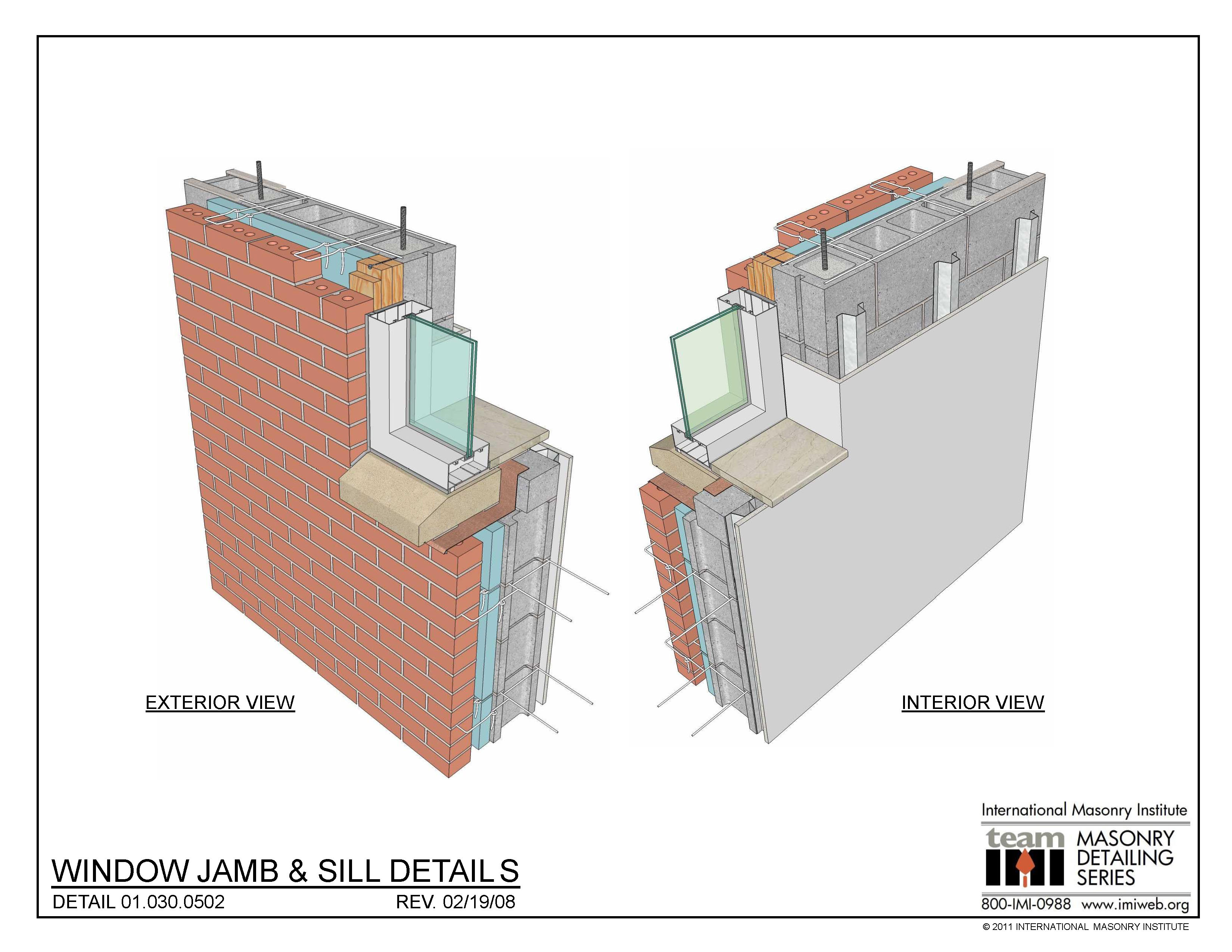
Nichiha CAD and Architectural Details Nichiha USA
Detail Post - Window Details. This timber cladding details post includes excerpts and details from our book Understanding Architectural Details - Residential. The book is now in its fourth edition, and was updated to reflect the changes to the Building Regulations in June 2022. All of the construction details in the book comply with the.

Building Envelope Blog Window Head, Jamb and Sill Details at metal siding
OVERVIEW: Windows are used in all claddings, how to detail the window sill, jamb and head for stucco will vary based on the following factors: • The type or style of window. There are basically flanged and non-flanged style windows. • Consider structure and its location. For example, a concrete high-rise in Miami will

09 21 16.03.132_DUROCK_Window Head Detail_EIFS_enlarge_1200.jpg (1200×
Legend. Typical Assembly: Interior gypsum board. Steel stud-framed wall. Closed-cell spray foam (CCSPF) insulation between studs (optional) and min. 2 inches continuous CCSPF. Single-wythe CMU wall with water-repellent admixture at block and mortar. Clear water-repellent. Storefront window on minimum 1⁄4-inch thick intermittent shims.

02.120.0601 Head Detail Storm Shelter Window / Door Head
Learn why contractors trust Andersen 400 Series windows more than any other. The choice is simple. Professional Information For. Architect Builder Remodeler Replacement Contractor Commercial. 2D - Detail File CSI Guide Spec ; Traditional Clad Interior Stacking (4 11/16", 8" and 12" bottom rail options) (4 11/16" stiles and top rail)

Gallery of A Guide to Window Detailing and Installation 5
Window Head Detail in Cavity Wall (with Nailing Flange) (Detail 1/E) | PDF. This detail shows head construction at an aluminum window set in a masonry cavity wall under a steel lintel. This detail will not accommodate differential movement between the window frame and the back-up wall.

Detail Post Window Details First In Architecture
Typical Assembly: Interior gypsum board. Steel stud-framed wall. Closed-cell spray foam (CCSPF) insulation between studs (optional) and min. 2 inches continuous CCSPF. Single-wythe CMU wall with water-repellent admixture at block and mortar. Clear water-repellent. Sealant over backer rod. Fluid-applied air barrier and WRB flashing membrane.

Sill, Head, and Jamb Details for New Windows in Old Holes ProTradeCraft
Double 2×12. 7 ft., 1 in. Two. (Based on the 2000 International Building Code) Calculating header size is complicated as you learn how to frame a window. You have to take into account: (1) the length of the window or door opening; (2) the combined weight of the floors, walls and roofs above; (3) the building width; (4) the snow load in the.

Passivhaus window head and sill Architectural Plans/Models
01.030.0602: Window Head Detail - Anchored Brick Veneer, CMU Backing October 20, 2022 01.030.0705: Shelf Angle Detail - Anchored Brick Veneer, CMU Backing, Shelf Angle with Bracket-Type Standoffs

01.030.0602 Window Head Detail Anchored Brick Veneer, CMU Backing
This is a detail of an exterior wall finished with stucco with a parapet to roof interface. DOWNLOAD: DWG / PDF (Right click to save these files) WINDOW HEAD DETAIL WITH STUCCO FINISH. This is a detail of an exterior wall with stucco finish at the window head. DOWNLOAD: DWG / PDF (Right click to save these files) WINDOW JAMB DETAIL WITH STUCCO.

window head detail brick Google Search Brick veneer, Exterior brick
This detail illustrates a masonry window head condition. The concrete masonry backing is treated with blocking at the perimeter of the opening, which is wrapped with transition material that engages with the air/moisture/vapor barrier in the field of the wall. This provides continuous resistance to air and moisture.

Head flashing for window with bevelback and cavity BRANZ Build
On a building with 12-inch thick well-insulated walls, we'll slide the windows back 3 1/2 inches so that every window has an individual built-in overhang right above the window head. That means we install most windows as "in-betweenies" instead of "innies" or "outies.". Treat the window flange as an installation aid only, not as a.

Design Details Details Page Durock Window Head Detail
WINDOW HEAD DETAIL. GENERAL NOTES. Provide insulation and finish systems to meet EIMA Specifications. Installation of insulation and finish system shall be in accordance to EIMA's Guide to Exterior Insulation & Finish System Construction. Cavity Insulation omitted from box header for clarity. Provide air/water barrier compatible to EIFS.

2WindowHeadDetailAnyFinish
Part II. The sketch indicated above/below is a continuation of my previous post. The sketch shows how to detail the window head and sill in a masonry veneer, steel stud back up exterior wall. It is important to maintain water tight exterior skin and continue the weather barrier into the opening. One way to accomplish this is to use butyl tape.

01.030.0502 Window Jamb & Sill Details International Masonry Institute
So, let's take a look at these modern window trim options: 1. Flat Stock Trim. Just like you might use a simple flat stock trim detail on the interior of your windows, the same flat stock detail at exterior works nicely. A flat stock trim aesthetic creates a modern look to an otherwise seemingly traditional siding material like vinyl.

Typical Window Detail BecoWallform Insulated Concrete Formwork
Our cast stone window designs make for the perfect finishing touch to any property. From window surrounds made for both new and restoration work, to keystones and window heads that add a decorative edge, we can supply a wide range of quality components in a number of dimensions. Handmade by our experts using high specification cast stone, we.

Head flashing for window with bevelback and cavity BRANZ Build
Figure 1 Raked window head directly under soffit. Design solution. As there is no room to incorporate a window head flashing, use a 40 + × 18 mm timber trim fitted and sealed against the junction between the soffit and window frame head. This is based on detail 8A(f) in Acceptable Solution E2/AS1 to New Zealand Building Code clause E2 External moisture.